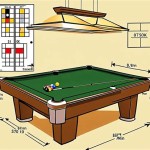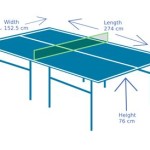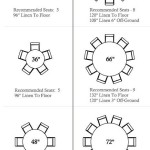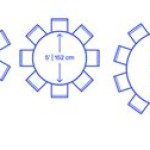```html
Groutable Vinyl Tile Reviews: A Comprehensive Guide
Groutable vinyl tile, also known as luxury vinyl tile (LVT) designed for grout, presents a compelling alternative to traditional ceramic or porcelain tile. This hybrid flooring option combines the aesthetic appeal of real tile with the inherent benefits of vinyl, such as enhanced durability, water resistance, and ease of maintenance. Before investing in this flooring solution, it's crucial to understand its advantages, disadvantages, and critical factors for informed purchasing decisions.
Understanding Groutable Vinyl Tile
Groutable vinyl tile distinguishes itself from standard LVT primarily through its design and installation process. Unlike standard LVT, which often relies on a click-lock or glue-down installation, groutable vinyl tile is specifically manufactured to accommodate grout lines, mimicking the look and feel of ceramic or porcelain. This design feature allows for a more authentic tile appearance and provides a more textured finish.
The tiles themselves are typically thicker than standard LVT, offering greater dimensional stability and a more substantial feel underfoot. These tiles are usually square or rectangular, similar to ceramic or porcelain options, facilitating various design layouts. The manufacturing process also incorporates slight beveling along the edges, creating a recess for the grout to settle, resulting in a clean and professional finish.
The composition of groutable vinyl tile typically includes multiple layers. The wear layer, the topmost protective layer, is crucial for resisting scratches, stains, and everyday wear and tear. Beneath the wear layer, a decorative layer showcases the tile's design, often mimicking natural stone, wood, or other aesthetically pleasing patterns. A core layer provides structural integrity and water resistance. Finally, some tiles may include an underlayment for added cushioning and sound absorption.
The installation process involves adhering the tiles to a clean, level subfloor, leaving a consistent gap between each tile. This gap is then filled with a specialized grout formulated for use with vinyl. The type of grout used is critical; a flexible grout is essential to accommodate the slight movement inherent in vinyl flooring, preventing cracking and ensuring long-term durability.
Advantages of Groutable Vinyl Tile
Groutable vinyl tile offers a range of advantages that make it an attractive flooring option for various applications.
Water Resistance: One of the most significant advantages is its superior water resistance compared to hardwood or laminate flooring. The vinyl core prevents water from penetrating the tile, making it suitable for bathrooms, kitchens, and basements where moisture is a concern. While the grout itself is not entirely waterproof, when properly sealed, it significantly minimizes water absorption, providing an effective barrier against spills and leaks.
Durability: The wear layer provides excellent protection against scratches, dents, and stains. This makes groutable vinyl tile a suitable option for high-traffic areas and households with pets or children. The thickness of the tile also contributes to its overall durability, offering a more resilient surface than thinner vinyl flooring options.
Aesthetics: Groutable vinyl tile successfully replicates the look of natural stone, ceramic, and porcelain tile. The ability to use grout enhances the realism, adding depth and dimension to the flooring. Various styles and patterns are available, allowing homeowners and designers to achieve a wide range of aesthetic preferences, from modern minimalist to classic traditional designs. The grout color also plays a significant role in the overall appearance, offering further customization options.
Ease of Maintenance: Cleaning and maintaining groutable vinyl tile is generally straightforward. Regular sweeping or vacuuming is sufficient to remove dirt and debris. Damp mopping with a mild detergent effectively removes stains and spills. The grout lines, however, require periodic cleaning to prevent discoloration and mildew growth. Specialized grout cleaners are available to address this issue, and sealing the grout annually can help maintain its appearance and prevent water absorption.
Comfort Underfoot: Compared to ceramic or porcelain tile, groutable vinyl tile offers a softer and warmer surface underfoot. This is particularly beneficial in colder climates or in areas where people spend a significant amount of time standing. The added cushioning from the underlayment (if present) further enhances comfort. This makes it a more comfortable option for kitchens, bathrooms, and other living spaces.
Cost-Effectiveness: While the initial cost of groutable vinyl tile may be higher than standard LVT, it is often more cost-effective than installing natural stone or ceramic tile. The installation process is typically simpler and faster, reducing labor costs. Furthermore, the durability of the material translates to fewer repairs and replacements over time, contributing to long-term cost savings.
Disadvantages of Groutable Vinyl Tile
Despite its numerous advantages, groutable vinyl tile also has some drawbacks that should be considered.
Grout Maintenance: While the vinyl tile itself is easy to clean, the grout lines require more attention. Grout is porous and susceptible to staining and discoloration. Regular cleaning and sealing are necessary to maintain its appearance and prevent the growth of mold and mildew. Neglecting grout maintenance can detract from the overall aesthetic appeal of the flooring.
Potential for Indentations: While durable, groutable vinyl tile is still susceptible to indentation from heavy furniture or sharp objects. Using furniture pads under heavy items can help prevent permanent indentations. Dragging heavy appliances or furniture across the floor should be avoided to minimize the risk of damage.
Subfloor Preparation: Proper subfloor preparation is crucial for a successful groutable vinyl tile installation. The subfloor must be clean, level, and free from moisture. Any imperfections or unevenness in the subfloor will be visible through the tile and can compromise the integrity of the installation. Self-leveling compounds may be necessary to ensure a perfectly smooth surface. This can add to the overall cost and complexity of the project.
Not a Perfect Substitute for Real Tile: While groutable vinyl tile effectively mimics the look of real tile, it is important to acknowledge that it is not a perfect substitute. Experienced eyes can often distinguish between the two materials upon close inspection. The texture and feel underfoot may differ slightly from natural stone or ceramic tile. However, for many homeowners, the aesthetic similarities are sufficient to achieve the desired look without the higher cost and maintenance requirements of real tile.
Limited Heat Resistance: While generally resistant to temperature fluctuations, groutable vinyl tile is not as heat-resistant as ceramic or porcelain tile. Extreme heat, such as from a hot pan placed directly on the floor, could potentially cause damage. Using trivets and other heat-resistant surfaces under hot items is recommended.
Key Considerations Before Purchasing
Before purchasing groutable vinyl tile, careful consideration should be given to several key factors.
Wear Layer Thickness: The thickness of the wear layer is a critical indicator of the tile's durability. A thicker wear layer provides greater protection against scratches, stains, and wear and tear. For high-traffic areas, a wear layer of at least 20 mils is recommended. Areas with moderate traffic may suffice with a 12-mil wear layer.
Tile Thickness: The overall thickness of the tile contributes to its durability and stability. Thicker tiles are generally more resistant to dents and indentations and provide a more substantial feel underfoot. Consider the intended use of the space and the expected level of traffic when selecting the tile thickness.
Grout Type: Selecting the appropriate grout is essential for the longevity and appearance of the installation. A flexible grout specifically designed for vinyl is necessary to accommodate the slight movement of the material and prevent cracking. Epoxy grout offers superior stain resistance and durability but is typically more expensive and more difficult to apply. Cement-based grout is a more affordable option but requires regular sealing to prevent staining and water absorption. Consult with a flooring professional to determine the best grout for a specific application.
Subfloor Preparation: Thoroughly assess the condition of the subfloor before beginning the installation. Ensure that it is clean, level, and dry. Repair any cracks or imperfections. Self-leveling compounds may be necessary to create a perfectly smooth surface. Improper subfloor preparation can lead to installation problems and premature failure of the flooring.
Installation Method: While groutable vinyl tile installation can be a DIY project, professional installation is often recommended, particularly for larger or more complex spaces. A professional installer will have the necessary tools and experience to ensure a proper installation, including precise cutting, accurate tile placement, and proper grout application. This can prevent costly mistakes and ensure a long-lasting and aesthetically pleasing result.
Budget: Establish a realistic budget that includes the cost of the tile, grout, installation materials, and any necessary subfloor preparation. Obtain quotes from multiple suppliers and installers to ensure competitive pricing. Factor in the long-term costs of maintenance, such as grout cleaning and sealing.
Style and Design: Carefully consider the desired aesthetic and choose a tile style and color that complements the overall decor of the space. Consider the size and shape of the tiles, the grout color, and the layout pattern. Samples of the tile and grout should be obtained and reviewed in the actual space to ensure a satisfactory match with existing furnishings and lighting.
By carefully evaluating these factors, prospective buyers can make informed decisions and select groutable vinyl tile that meets their specific needs and preferences.
```
L And Stick Groutable Vinyl Tile Do They Last 4 Years Later This Diy Life

Groutable Luxury Vinyl Tile Floor An Update Jenna Burger Design Llc Interior Architectural Consulting

L And Stick Groutable Vinyl Tile Do They Last 4 Years Later This Diy Life

L And Stick Groutable Vinyl Tile Do They Last 4 Years Later This Diy Life

L And Stick Groutable Vinyl Tile Do They Last Story This Diy Life

Pin On Bathrooms

How To Install Groutable Vinyl Tile

L And Stick Groutable Vinyl Tile Do They Last 4 Years Later This Diy Life

Diy Groutable Vinyl Floor Tile For An Easy Porcelain Dupe Hometalk

Diy Groutable Vinyl Floor Tile For An Easy Porcelain Dupe Hometalk








